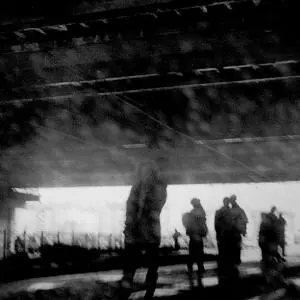Photographing the city in which resided for a certain period of time demonstrates our presence in that particular place, but also the way we see the same place. Unlike its inhabitants, who have generally adopted an image of their city - the traveler, passing through the observer, the city is in a different way. He observes it in a relaxed way and not determined by previous experience. In this sense the observation of Fabio Sgroi of the city of Belgrade is very personal - he photographed the city in detail and movement in the reflection of the surface, creating a mosaic with many fragments of the city. This mosaic consists of many images, faces, movements, shadows heterogeneous, and gives an impression of precision, leads the viewer to witness a deep subjective experience of the place, where the actual photograph is transformed into a poetic content, almost imaginary.With the keen eye of an observer, Sgroi chooses the themes 'unrepresentative', it seems even indifferent and often successful, according to a principle of old photographs, on making things clear 'focal point', with which the same photographic frame becomes compelling , Logical, almost classical. The author is in this sense any foreign accent and anecdotal narrative. Faces, forgotten corners, shades indefinite movements are 'caught' in good time (before or after taking a moment would be something different), which is characteristic of photographers trained in the best way to Bresson). Looking at the pictures of Sgroi is difficult to remove the impression that he is almost physically closer to the subject, it seems as if they share his fate. And that empathy is the best testimony to the fact that Sgroi is not only an indifferent observer of the scene, good or bad, or motion of calm, happiness or unhappiness, rather he feels the same human need to participate in the event of truly understand where we are or where only pass.
Maria Mazza
Director IIC Belgrade

 Share / Save
Share / Save





Comments 1
Say something